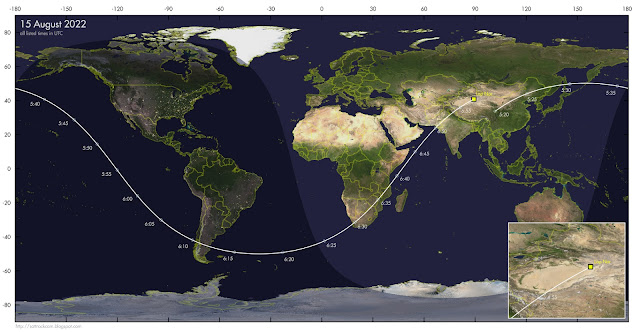Over the past 10 days I have been following the second test flight of China's "Experimental Test Spacecraft" (2022-093A), a.k.a. it's "Space Plane". See also an earlier post.
The 'Space Plane' has been on orbit now for almost 10 days. That is already clearly longer than the first 2-day test flight from 2020. We have no idea how long they intend to fly it this time. It may be two weeks, maybe months, maybe more. We don't know, and will have to see.
However, if it would land within days from now, then my bet is it will be on August 15 near 7:00 UTC.
[update: it didn't land. As of early August 16, it was still on orbit]
On that date on that particular pass, if the spacecraft does meanwhile not manoeuver, the 'Space Plane' groundtrack will cross right over the landing strip near Lop Nor where the previous test flight landed. The maps below show the track leading to it, and how the track actually passes over the landing strip (the triangular structure in Copernicus Sentinel image) near 6:57 UTC on August 15:
 |
| click map to enlarge |
 |
| click map to enlarge |
UPDATE 16 August: it did not land on August 15.
NOTE: this post originally also featured a plot of the RAAN evolution of the spacecraft, with what appeared to be a 'wobble', suggesting small corrective manoeuvers.
I deleted the diagram and accompanying text because it turned out that a weird bug in my spreadsheet (Excel) caused it (!). I am still not sure what happened there. Reloading the dataset and then creating a new diagram had the wobbles disappear. Even though it was the same dataset in the same columns of the spreadsheet.
Thanks to Cees Bassa for noting something was off with the original plot.









